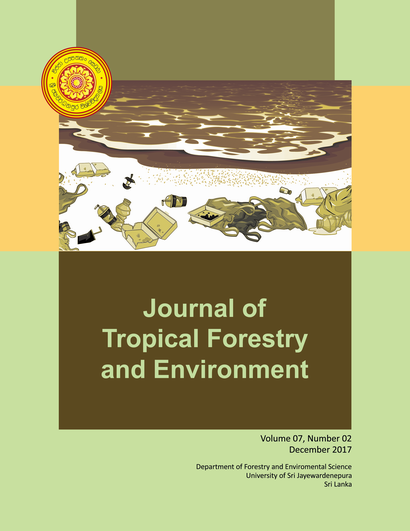Performance of tropical vertical subsurface flow constructed wetlands for leachate treatment at different hydraulic loading rates
DOI:
https://doi.org/10.31357/jtfe.v7i2.3308Abstract
This study is focused on the investigation of three different types of plant species namely; Narrow leaf Cattail (Typha angustifolia), Green Bulrush (Scirpus atrovirens) and Umbrella Palm (Cyperus alternifolius) for treatment of leachate. Twelve laboratory scale subsurface flow constructed wetland models were operated in batch mode. Four models, each containing similar plant species were fed with synthetic leachate having four different concentrations (25%, 50%, 75% and 100%) and 7 days HRT was given. The duration of a batch run was 12 weeks. Removal efficiencies of BOD5, COD, PO43-, TC, and TN were measured. Evapotranspiration (ET) loss of each test run was also assessed. According to the results, the constructed wetland planted with Umbrella palm and fed with 25% leachate showed the best pollutant removal efficiencies of 99.26% for BOD5, 99.61% for COD, 98.78% for TN and 97.34%for TC. Highest ET potential of 93.57% was also observed from the constructed wetland with umbrella palm fed with 25% leachate. Two way ANOVA analysis was carried out for each plant species and leachate concentration and the Umbrella Palm species was identified as the best for leachate treatment.
Key words: Constructed wetlands, landfill leachate, plant species and pollutant removal
Downloads
Published
How to Cite
Issue
Section
License
The publisher retain the copyrights of contents published, and all open access articles are distributed under the terms of the Creative Commons Attribution-Noncommercial-No Derivative Works 3.0 Unported License[U1], which permits unrestricted use, distribution and reproduction in any medium, provided that the original work is properly cited.
You can download the Legal Code for this License at: http://creativecommons.org/licenses/by-nc-nd/3.0/legalcode


